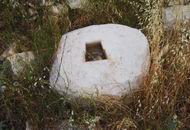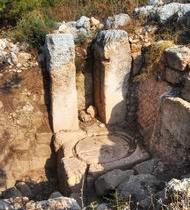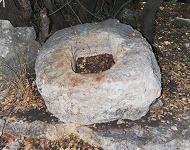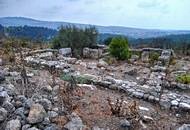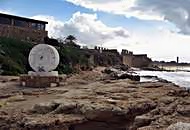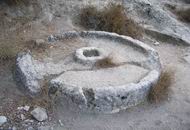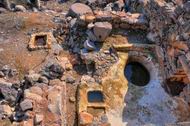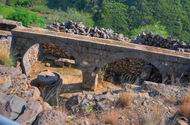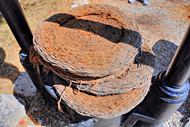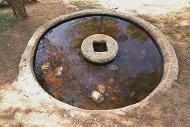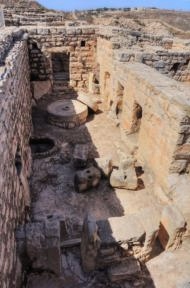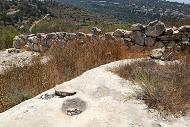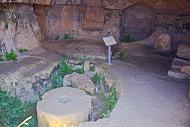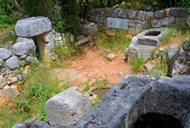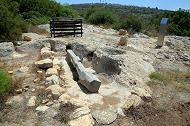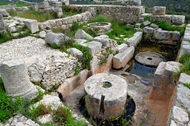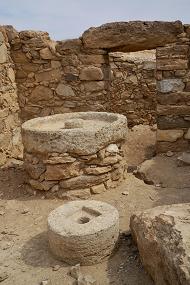This page reviews the process of olive oil production. It lists the Oil presses that are featured in BibleWalks sites.

Home > Info > Structures > Oil Presses
Contents:
Overview
* Olive growing
* Harvesting
* Producing Oil
Oil Production
* Crushers
* Presses
Sites with oil presses
Biblical
Etymology
Links
Olive Growing:
Olive oil is produced by growing olive trees, harvesting the olives, crushing them with an oil press, and collecting the golden juice. This process started about 5000 year ago, and its popularity and worth increased ever since.
Growing an olive tree for olive oil production typically takes several years before the tree begins to produce a significant amount of fruit. The exact time it takes for an olive tree to mature and start producing fruit can vary depending on various factors such as the cultivar, soil quality, and climate conditions.
On average, it can take between 3 to 5 years for an olive tree to begin producing fruit that can be used for olive oil production. However, it may take up to 8 years or more for some olive tree varieties to mature fully and produce a substantial harvest.
Once an olive tree reaches maturity, it can continue to produce olives for several decades, with some olive trees still producing fruit even after 100 years of age. However, the quality and quantity of the olive fruit produced by the tree can decrease with age and proper care and maintenance are essential to ensure the tree remains healthy and productive.
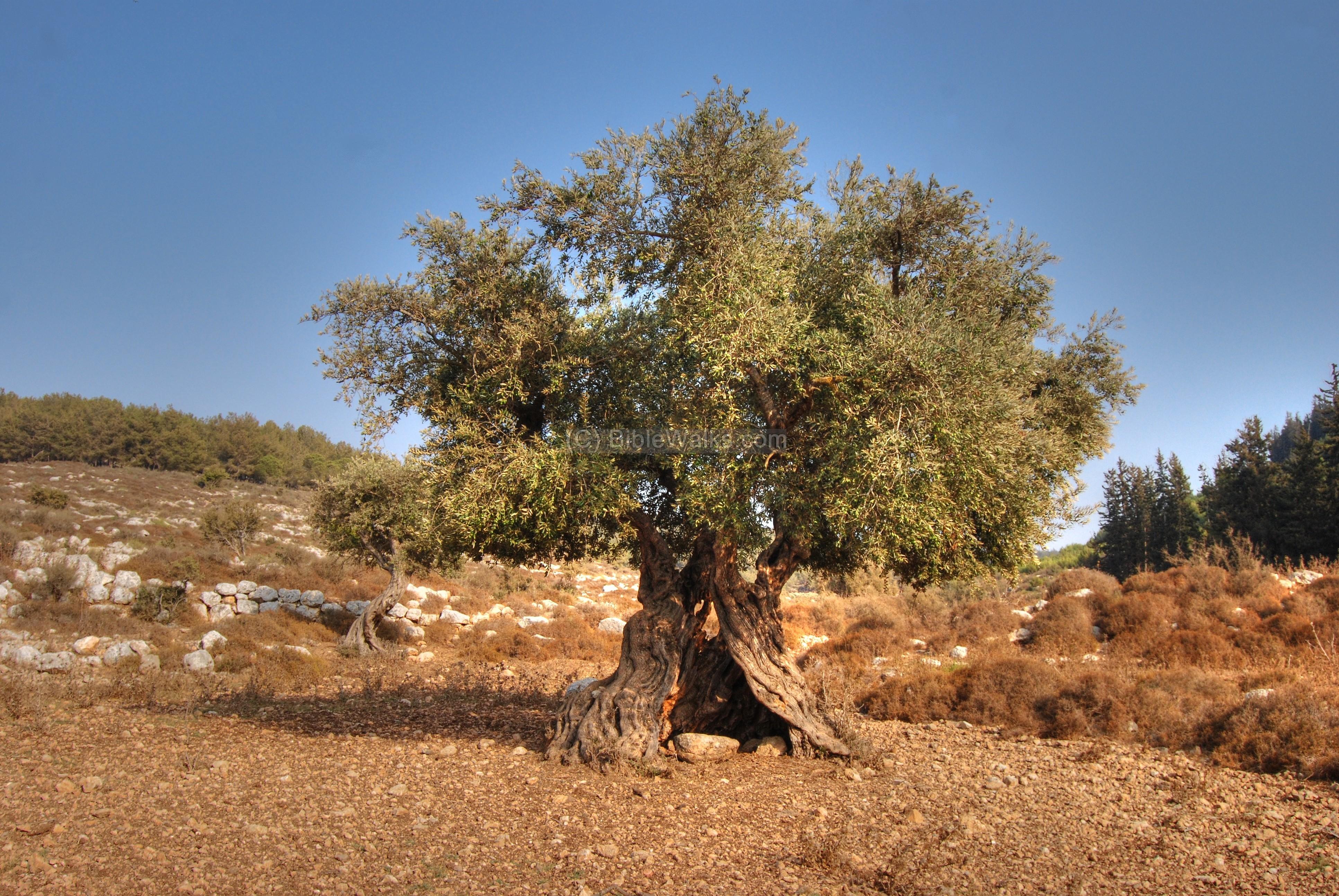
Ancient olive tree in Hilazon creek
Olive Harvest:
In the Levant region, the time to pick olives typically depends on the variety of the olive tree and the local climate conditions. However, the general olive harvest season in the Levant usually begins in late September or early October and can continue until January.
Some varieties of olive trees in the Levant may ripen earlier or later than others, so the specific timing for picking olives can vary depending on the region and the type of olive. Additionally, weather conditions, such as rainfall and temperature, can also affect the timing of the olive harvest.
During the olive harvest season, many families in the Levant participate in a traditional process of picking and pressing olives to produce olive oil, which is an important part of the region’s cuisine and culture.
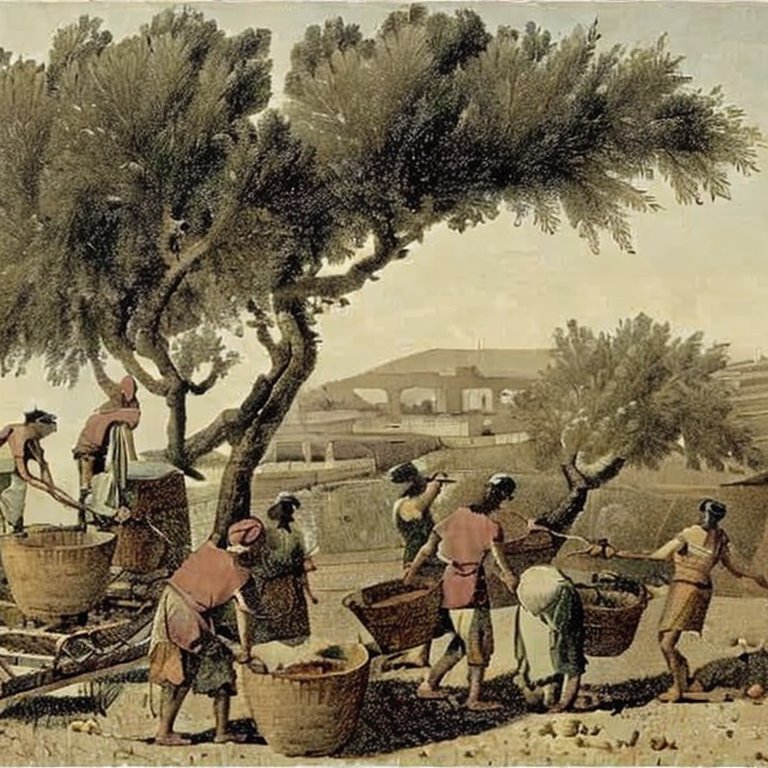
Picking olives in ancient times – AI generated by Stable Diffusion
Oil production:
Olive oil was used as a cooking oil, food, lighting fuel, soap making, religious ceremonies and medicinal use. Its production was one of the major sources of income in the Holy Land over thousands of years, including modern times when the olive oil is an essential ingredient in the Middle East cuisine.
During the Roman and Byzantine periods the number of oil presses was in the thousands; many farmers had their own private installations, and larger public industrial complexes generated huge amount of olive oil. In the area of the Golan heights alone, 109 oil presses were found in 58 ancient sites (ref: Atiqot XXXIV), most of them operated during the Roman and Byzantine period.
The olive oil production process was based on two major steps:
- The first step requires crushing the olives using a crushing stone, and collecting them into a basket.
- The second step is done on another installation: the basket is pressed with force, extracting the oil out of the crushed olives and collecting the juice into a storing vat.
There were different types of machines that were used to crush the olives and then press the oil out of the crushed olives. They differed in their size, method of operation, use of human or animal power, infrastructure and capacity. Most of the oil presses had a single crushing stone and basin, and one or two pressing devices.
First step: Crushing the olives
The devices were the first process of the olive oil production, where the olives were crushed and placed into a basket.
(a) Rolling stone crusher (“type 3”):
This oil press used a large rolling stone to crush the olives. The stone was held upright by an axis, which was connected to a long handle. The handle was pushed by humans or animals. The mashing stone rolled along a cavity on the circumference of the base, crushing the olives. The crushed olives would then be collected into a basket and then further processed by the oil press.

Second step: Pressing the crushed olives
The oil press device was the second step in the olive oil production, where the crushed olives were pressed with force in order to extract their juice.
There are several common types of ancient oil presses, which did not change much after the Hellenistic period. These were classified into several types, which were defined and numbered in Rafael Frankel’s doctorate thesis. The most common oil press types are detailed below – #4 (lever based), #7 (direct pressure screw) and #6 (lever-screw-cylindrical weight) .
(a) Lever based press (“type 4”):
A reconstructed oil press, seen below, was found in a 8th century BC four-roomed house above the palace in Tell Hazor. This is a typical lever-based oil press which was in use in the Biblical periods. Later the oil press evolved into other types of machines.
In this oil press, a stone weight was tied to the edge of the wooden lever, pushing the lever down. The use of a lever exerts a large force over a small distance. The force of the lever pushed a flat stone down on a basket, which contained the olives. The stone squeezed the basket, extracting the precious olive oil unto the round grooves of a basin stone. The juice flowed down along these grooves, out through an outlet in the basin, and down into a collecting vat. The olive juice contained water and oil. After a few days, the lighter oil in the juice floats above the water, and it is then collected and stored in jars.
(b) Direct-Pressure screw press (“type 7”):
A direct-pressure oil press, seen below, was found and reconstructed in a 5th-8th century AD church in Kursi. This is a typical screw-based oil press, using a direct pressure crushing method. It was widely used in the Golan and Galilee in the Hellenistic and Roman/Byzantine periods.
In this oil press a vertical screw was fixed inside a wooden frame. The frame was supported by a stone base with holes on each side. The screw was turned around with a short handle, which pushed down a crushing stone upon the basin. The juice flowed out from an outlet into the collecting vat.

(c) Lever-screw-cylindrical weight (“type 6”):
This type is a hybrid of the lever based type and the screw type. The pressure on the lever, pushed down by weights, was replaced with a screw that pushed down the lever.
A wooden lever (not seen in the photo) was held on its two edges by a niche in the wall and a screw installation on its other end above the weight. A wooden installation was connected to the side of the weight, held upright by the twin mortises (cavities) on its side. The cylindrical weight, normally weighing between 1.5 to 4 tons, forced the lever down when the screw was tightened up. The lever pushed down the baskets of olives which were placed on top of the basin. The extracted oil then poured out of the outlet into a collecting vat.
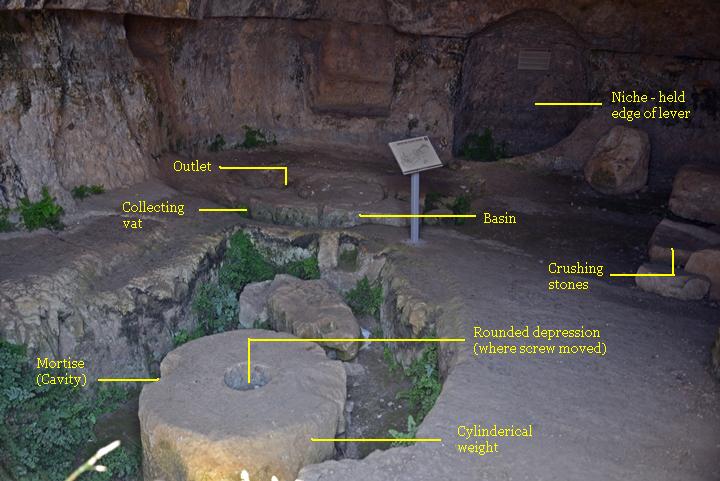
An illustration of this type is displayed at the side of an oil press in H. Danaila. A sign (with Hebrew title: “Byzantine Oil press”) on the eastern wall describes the operation of the oil press, and illustrates its design. The legend of its elements is as follows: (1) baskets with crushed olives, (2) pressing base, (3) lever, (4) arch, (5) large wooden screw, (6) cylindrical weight, (7) collecting vat.
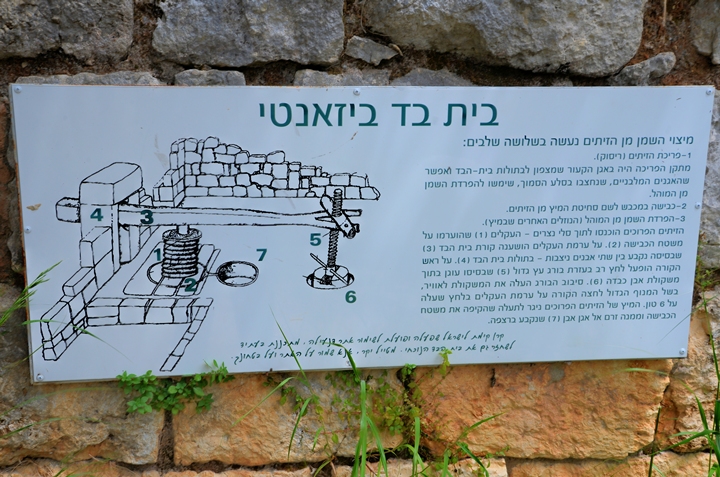
Sites with Oil crushers and presses:
The elements of the olive crushers (crushing stones, crushing basins) – and oil presses (press weights, pillars, basins) and other stone parts – are found in great quantities in most of the excavated sites, near the ancient sites and in the fields .
The following section lists the sites of oil presses that are featured in BibleWalks. Click on the site’s name to see more information on each site, or on the picture to view it in higher resolution. Each entry names and points to the site, defines the oil press type, dates the installation and provides a photo.
- Inside the ancient Crusader structure is an oil press, where the ancient process is demonstrated. This ancient hall is about 1,000 years old and the oil press is in operation for about 400 years.
- “type #3” – Crushing stone rolled around basin
- Ottoman 17th century (in 12thcentury Crusader fortress)
- A weight of an oil press was found inside the room, behind a Byzantine church. With its weight the stone held down the bottom of a screw, which was turned around to press down a beam. The beam then pushed down over the olives, thus extracting their oil.
- “beam and screw”
- Byzantine (5th-7th century AD)
- The press is based on a horizontal beam made of wood, which hanged on a pair of vertical pillars. The beam was pushed down, using a set of stone weights, onto a round crushing basin. It pressed baskets with olives, extracting their juice which flowed into a collecting pool. The oil was then collected into vessels.
- “type #4.2” – lever and weight
- Roman (1st-2nd century AD)
Kh. Kav, Karmi’el
- An element of an oil press is located in the garden. The large stone was used as weight to push down and press the stone on the basin, in order to extract the juice.
- Byzantine (5th-7th century AD)
- In the north side of the basilica is a set of oil presses. The photo shows a crushing stone and basin where the olives were placed and crushed.
- “type #3” – Crushing stone rolled around basin
- Byzantine (5th-6th century)

- A direct-pressure screw type structure is also located inside the church compound, and was reconstructed.
- “type 7”: Direct-pressure screw type
- Byzantine(5th-6th century)
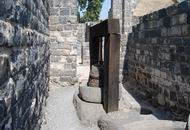
- A massive complex for producing oil, one of the largest in Israel, was excavated in the south-eastern side of Moshav Achihud. Upon the basin of the mill was a heavy crushing stone that was turned by an animal, crushing the olives.
- Three screw type press beds Byzantine (6th-7th century)
- On the north-western side of the site, below the houses, are remains of an oil press. Some of its other parts were robbed in the past.
- “beam and screw”
- In one of the reconstructed houses, on the western side of the site, was an oil production complex. In its central yard was a storage place for olive oil. Around the structure were several oil press installations, each included a crushing basin, weights and collecting place for the extracted oil.
- Several installations with crushing basin and weights
- Israelite (8th century BC)
- After entering the Moshav, you can see on the right side a base of an oil press – a mash olive press type. The olives were placed inside the basin, and a mashing stone was turned around the cavity to press the olives.
- “type #3” – Crushing stone rolled around basin
- Roman/Byzantine (2nd-7th century AD)
- A press-bed of an oil press was found on the eastern slope of the ancient Tell. The olives were placed on the basin’s surface, and crushed by a stone (1.6M diameter, which is located nearby). Then the extracted oil collected into the grooves, flowed through the outlet on the left side into a collecting jar.
- type 4.2.2
- Byzantine period
- Adjacent to the city gate are the remains of an oil press. In the base of the oil press the olives were placed in bags on top of the base, and a heavy stone pressed from above, squashing out the oil extract through the small groove on the right side, and flowed into a jar.
- Direct-pressure screw type
- The oil press stone was relocated to the beach.
- “type #3” – Crushing stone rolled around basin
- A reconstructed oil press, seen below, was found in a 8th century BC four-roomed house above the palace. The stone weight on the edge of the lever pushed the stone on the basket and squeezed the olives, extracting the precious olive oil unto the grooves of the base stone.
- “Type 4”:Lever & weight
- Israelite (8th century BC)
- Base of a crushing stone located in a stone quarry near Khirbet Oren.
- “Type #3” – base of a crushing stone
- Several oil press installations are on display in the excavations. The photo on the right are elements of an oil press, with a clear view of the collecting vat.
- “Type 4.2”
- Roman/Byzantine
Gamla (Area B)
- This oil press, dated to the 1st century BC, is based on a lever based press design. A total of 6 weights were found here.
- “Type 4” Hellenistic/Hasmonean
Gamla (Area R)
- A large oil press under a double arched room, with a crushing stone & basin and two oil press installations, and a Mikveh.
- “Type 4.2.3”
- Early Roman
- A display of oil presses in front of the Church of the first Feeding of the Multitude.
- The press is based on a horizontal beam made of wood, which hanged on a pair of vertical pillars. The beam was pushed down, using a set of stone weights, onto a round crushing basin. It pressed baskets with olives, extracting their juice which flowed into a collecting pool. The oil was then collected into vessels.
- “Type 4.2” – lever and weight
- Byzantine
- A collection of oil presses, collected from different excavations in the West Bank and Gaza.
- A display of old and ancient oil presses in the courtyard of the Beit Jamal monastery.
- Modern, Byzantine
- A group of olive oil crusher basins, hewn into the rock
- “type #3” – Crushing stone rolled around basin
- Byzantine
- Two types of oil presses.
- “type #3” – Crushing stone rolled around basin
- “type #4.2” – lever and weight
- Direct-pressure screw type
- Byzantine
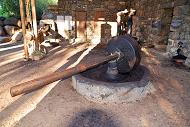
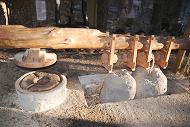
- The well preserved oil press is located inside a Hellenistic period Mansion, west of the Samaritan’s holy precinct of Mt Gerizim. It includes a crusher, presser and store rooms.
- “type #3” – Crushing stone rolled around basin
- “type #4.2” – lever and weight
- Hellenistic
- A small scale oil press, based on a rock hewn cup mark (Hebrew: Saflul).
Kh. Nisya, Psagot (Northern Judea)
- Underground oil press.
- Type #6 – lever, screw and cylindrical weight.
- Used up to the Early Arab period (7th-10th century AD).
H. Danaila (Kh. Inaileh)
- Byzantine oil press in the northern edge of the Upper Galilee village.
- One of 3 oil presses unearthed inside the ruins of the village.
- Type #6 – lever, screw and cylindrical weight.
- Byzantine; used up to the Early Arab period (7th-10th century AD).
- First temple period oil press
- “Type 4”: Lever & weight
- Israelite (8th century BC)
Horvat Zunam
- Olive oil crushing basin
- “type #3” – Crushing stone rolled around basin
- Crusader
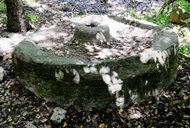
- Oil press
- Type #6 – lever, screw and cylindrical weight.
- Early Arab period
- Oil press installation inside the Moa Nabatean fortress.
- Type #3 – Crushing stone rolled around basin
- Nabatean (3rd century AD)
Karmei Katif
The largest complex of oil presses in Israel is located in the Karmei Katif near Moshav Amatzia. The 9 installations are located in several caves cut into the soft nari stone.
Biblical references:
The Bible contains several references to olive oil production, particularly in the Old Testament. Here are a few examples:
- Deuteronomy 8:7-8: This passage describes the land of Canaan, which God promised to the Israelites. It says, “For the Lord your God is bringing you into a good land– a land with brooks, streams, and deep springs gushing out into the valleys and hills; a land with wheat and barley, vines and fig trees, pomegranates, olive oil and honey.”
- Exodus 27:20-21: This passage describes the oil for the lampstand in the tabernacle. It says, “Command the Israelites to bring you clear oil of pressed olives for the light so that the lamps may be kept burning.”
- Leviticus 24:1-4: This passage describes the lampstand in the tabernacle, which was to be kept burning continuously. It says, “Command the Israelites to bring you clear oil of pressed olives for the light so that the lamps may be kept burning. In the tent of meeting, outside the curtain that shields the ark of the covenant law, Aaron and his sons are to keep the lamps burning before the Lord from evening till morning. This is to be a lasting ordinance among the Israelites for the generations to come.”
- 1 Kings 5:11: This verse describes the tribute that Solomon received from Hiram, king of Tyre. It says, “Solomon gave Hiram twenty thousand cors of wheat as food for his household, and twenty thousand baths of pressed olive oil. Solomon continued to do this for Hiram year after year.”
- Micah 6:15: This verse describes the punishment that God will bring upon the people of Israel for their disobedience. It says, “You will sow but not reap; you will press olives but not use the oil, you will crush grapes but not drink the wine.”
Etymology (behind the name):
- Shemen – Oil in Hebrew.
Links:
-
Oil presses: Antiquities XXXIV
[ISSN 0792-8424] survey of oil presses in the Golan (Chaim Ben-David, pp1-62)
-
Wine & Oil Production in Antiquity in Israel & other Med. Countries
[ISBN 1850755191 1998] Frankel, Rafael.
-
History & Technology of Olive Oil in the Holy Land
[ISBN 09177526066 1994] Frankel, Avitson, Ayalon.
BibleWalks.com – exploring the Bible places in Israel
Wine presses <<<—Previous info—<<< All Info >>>—Next —>>> Roman Roads
This page was last updated on Apr 12, 20923 (add overview on olives, illustration)
Sponsored links:


